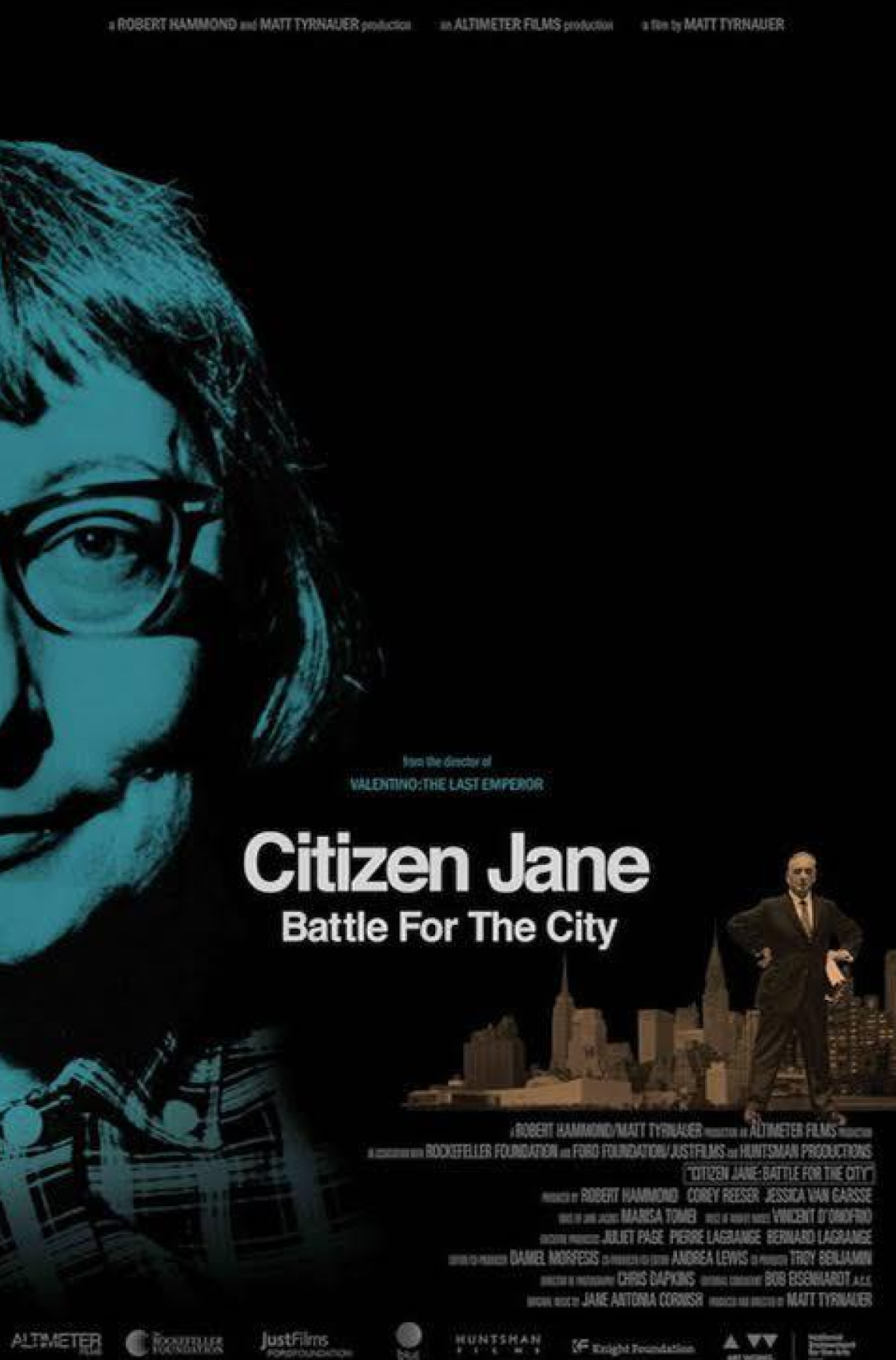The Street Project
The Street Project is the story about humanity’s relationship to the streets and the global citizen-led fight to make communities safer.
Digging deep into the root causes of traffic violence, the filmmakers engage a diverse array of experts including street historian Peter Norton, city planner Jeff Speck, and urban design expert Mikael Colville-Andersen. These expert interviews are interwoven with the stories of real people working to make their communities safer.
Directed by Jennifer Boyd.
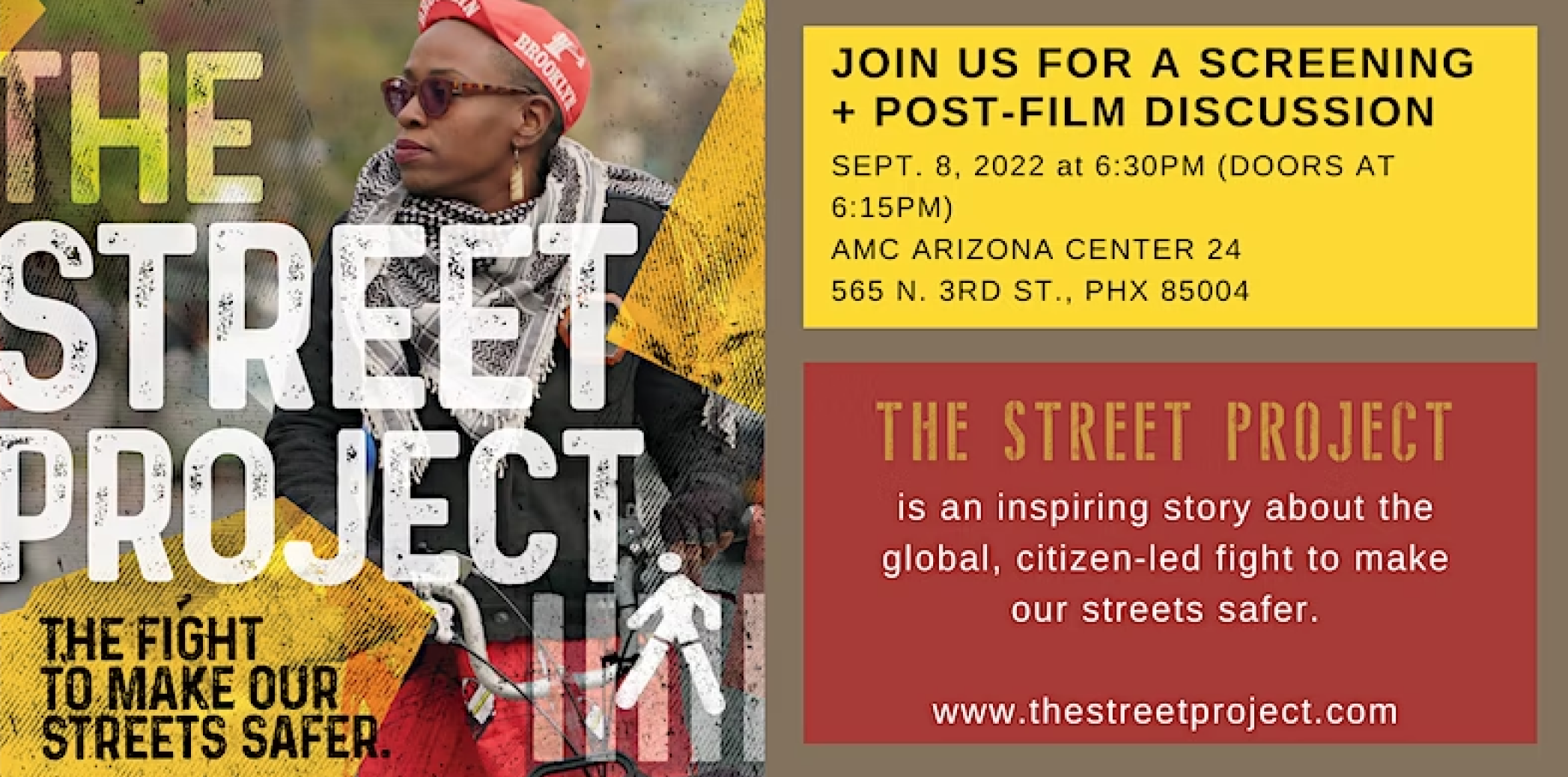
The Experimental City
The Experimental City is a documentary about the Minnesota Experimental City project, a futuristic attempt to solve urban problems by creating a full-size city from scratch in the isolated woods of northern Minnesota.
Directed by Chad Freidrichs.

The Pruitt-Igoe Myth
It began as a housing marvel. Two decades later, it ended in rubble. But what happened to those caught in between?
The Pruitt-Igoe Myth tells the story of the transformation of the American city in the decades after World War II, through the lens of the infamous Pruitt-Igoe housing development and the St. Louis residents who called it home.
Directed by Chad Freidrichs.
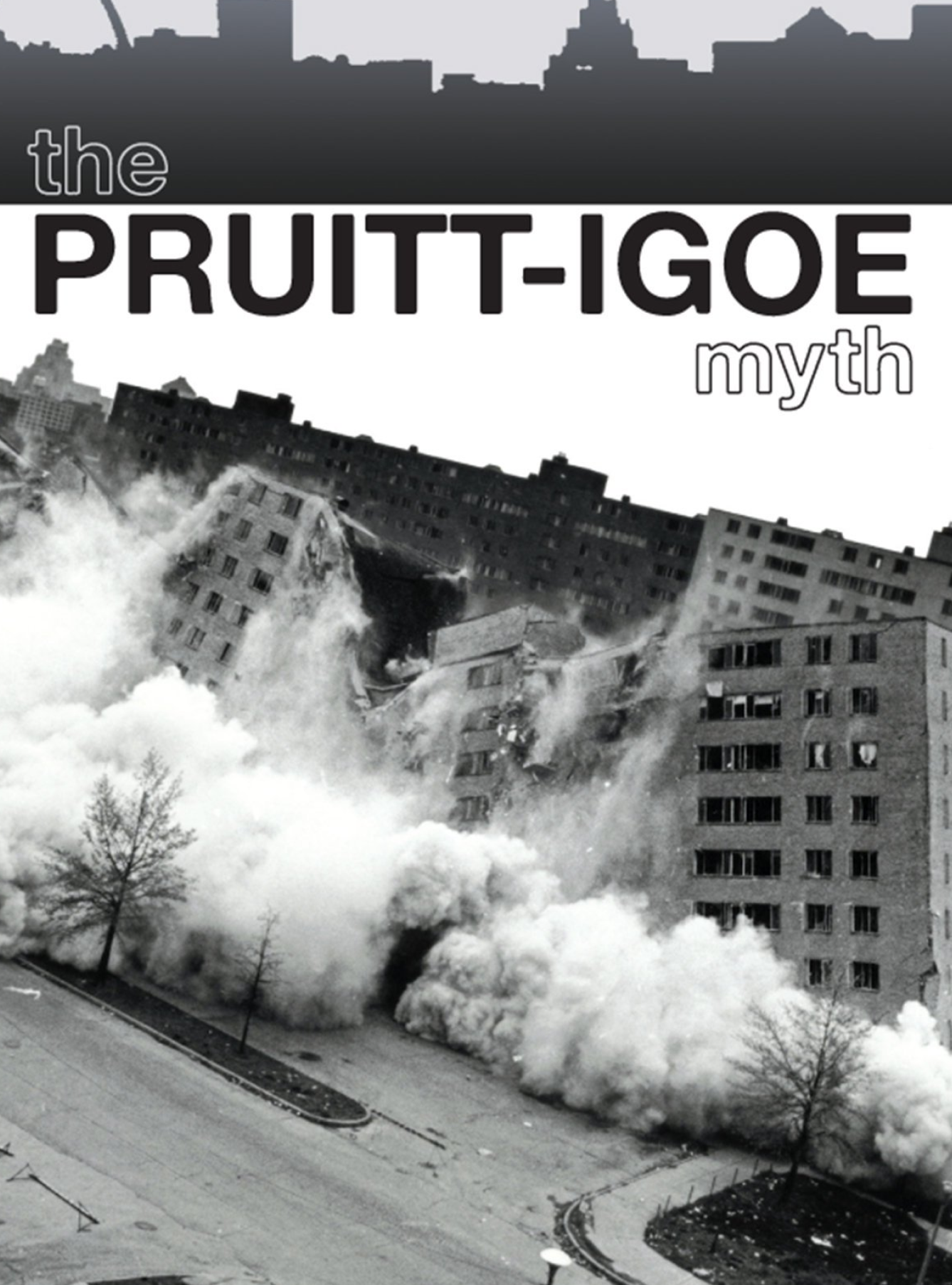
The Parking Lot Movie (2010)
Hailed as the “most feel-good film” of the South by Southwest Film Festival 2010, The Parking Lot Movie celebrates a brotherhood of eccentric attendants who man a unique parking lot in Virginia. From grad students to middle-age slackers, indie-rock musicians to surly philosophers, these over-educated part-timers wax profoundly about car culture and capitalism, seek vengeance against entitled patrons and thieves, and make fun of drunken jerks.
Produced by Meghan Eckman.
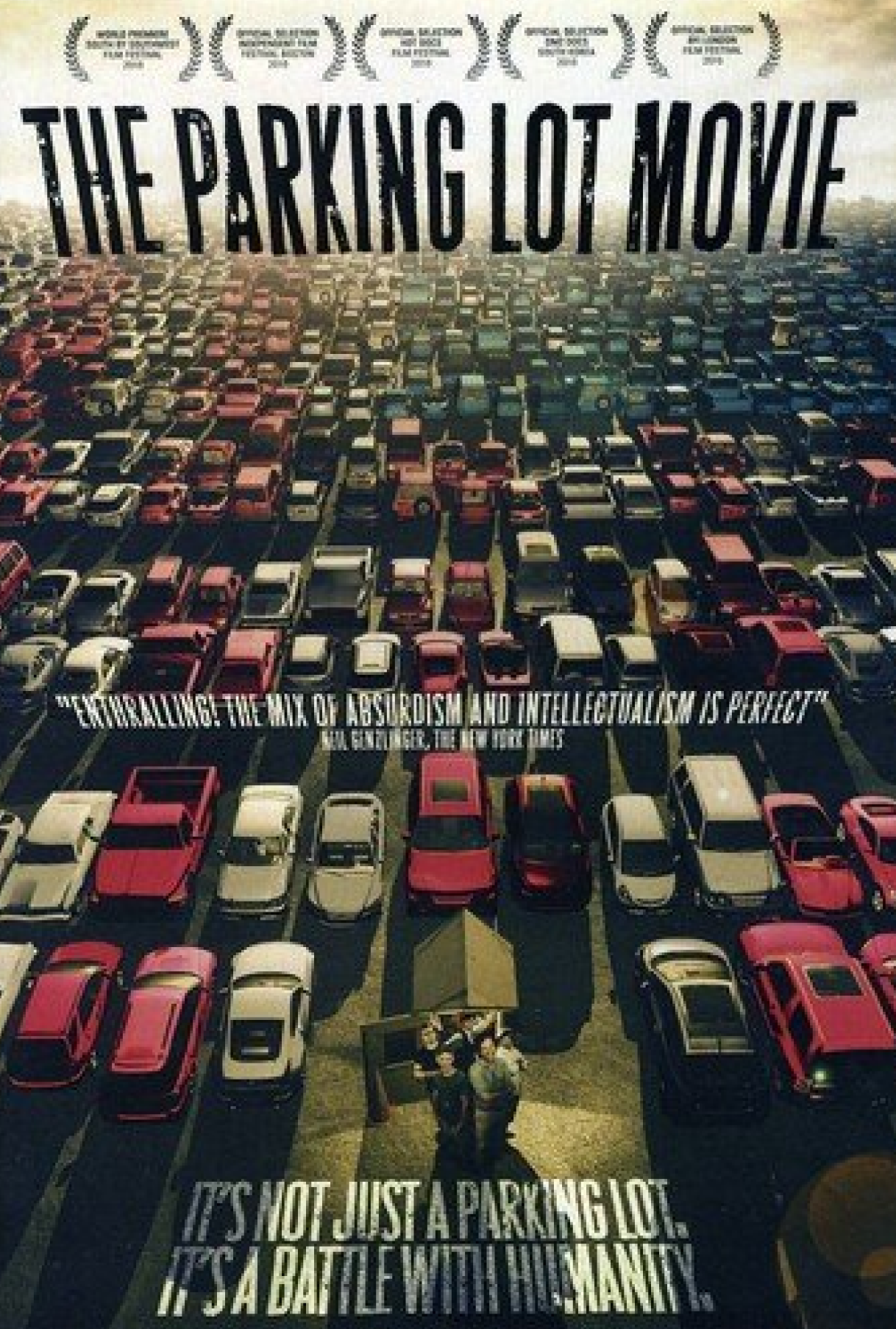
16 Acres (2012)
The rebuilding of ground zero is one of the most architecturally, politically, and emotionally complex urban renewal projects in American history. From the beginning, the effort has been fraught with controversy, delays and politics. The struggle has encompassed eleven years, nineteen government agencies, a dozen projects and over $20 billion.
Aside from the staggering engineering challenges of the site itself, a major complicating factor in the rebuilding of the World Trade Center is the sheer number of interested parties. Politicians, developers, architects, insurance companies, local residents, and relatives of 9/11 victims all profess a claim to the site and are often in conflict with one another. According to The New York Times, “Where some saw lucrative real estate, others saw a graveyard. Where some saw Rockefeller Center or Lincoln Center or Grand Central Terminal, others saw Gettysburg.”
What was once ground zero is now a frenzied construction site. Three thousand workers are building four of the tallest skyscrapers in America, an iconic – and complicated – train station, a performing arts center and a sacred memorial and museum. What will emerge in downtown Manhattan over the next few years will redefine the city – and the country – for generations.
16 Acres is the story of how and why this historic project got built. At the heart of the story is the dramatic tension between noblest intentions, the desire of everyone involved to “get it right,” and the politics, hubris, ego and ideology that is the bedrock of New York City. What does it say about us as New Yorkers, as Americans?
As with all great urban projects, from the Pyramids to Rome’s Colosseum to Rockefeller Center, a small group of powerful people will dictate the outcome. With inside access to the project and these key players, 16 Acres tells the story behind the headlines. Who are these men and women? What motivates them? How will their personalities shape the project? And, ultimately, will it succeed? The film also follows the dramatic rush to complete the memorial in time, and the key players as they prepare to converge on the site for the10th anniversary.
Produced by Richard Hankin.
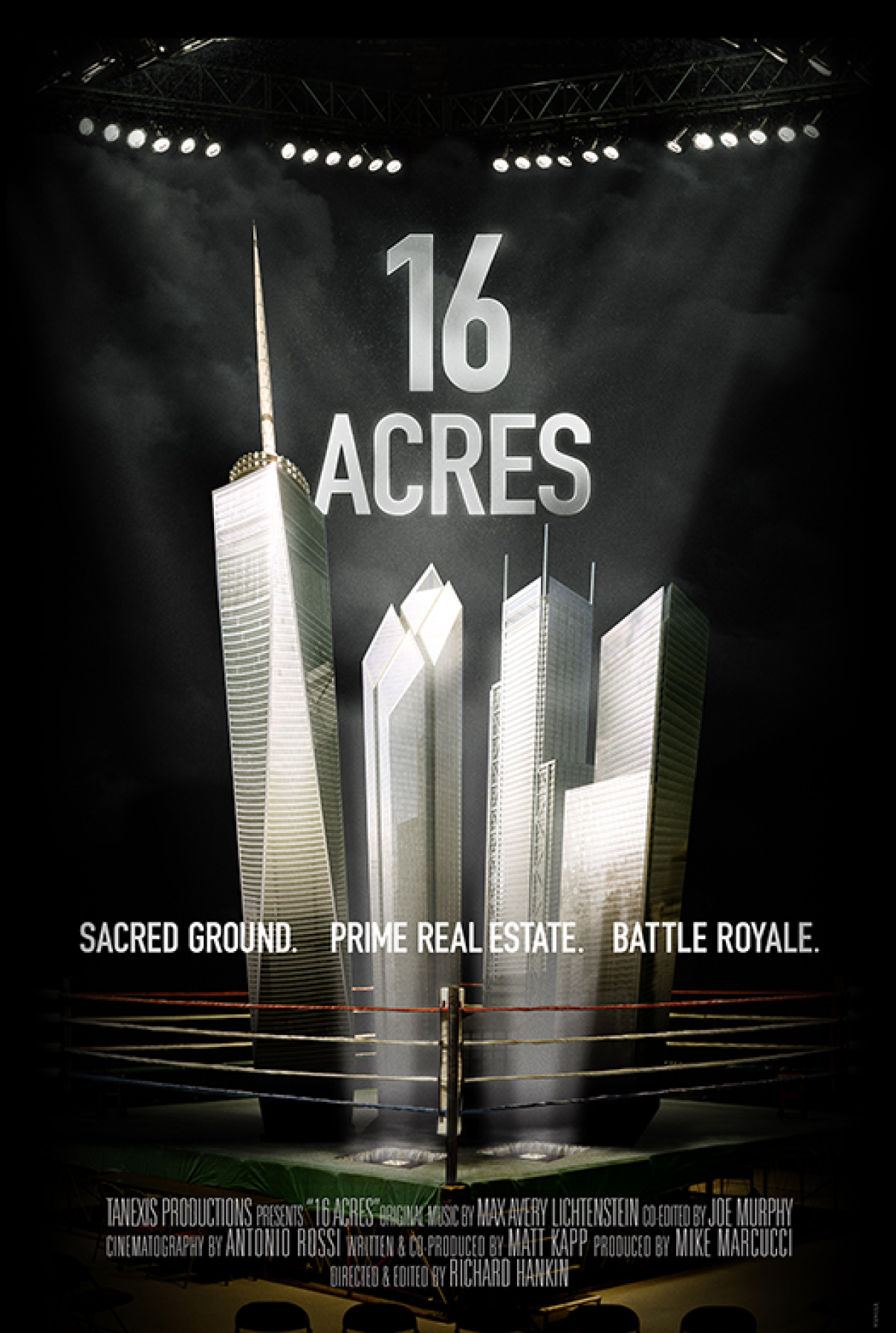
DETROPIA (2012)
Originally the birthplace of the middle class, Detroit is now on the brink of complete collapse. Loosing over 25% of it’s population and 50% of its manufacturing jobs over the past decade, Detroit is now in a state of emergency. Racial tension, globalization, lack of innovation, and corporate greed has led to a moment of truth for Detroit.
DETROPIA is a cinematic tapestry featuring the lives of several citizens trying to survive the D and make sense of what is happening to their city.
Produced by Heidi Ewing and Rachel Grady.

A Convenient Truth: Urban Solutions from Curitiba, Brazil (2006)
A Convenient Truth: Urban Solutions from Curitiba, Brazil is an informative, inspirational documentary aimed at sharing ideas to provoke environment-friendly and cost-effective changes in cities worldwide. The documentary focuses on innovations in transportation, recycling, social benefits including affordable housing, seasonal parks, and the processes that transformed Curitiba into one of the most livable cities in the world.
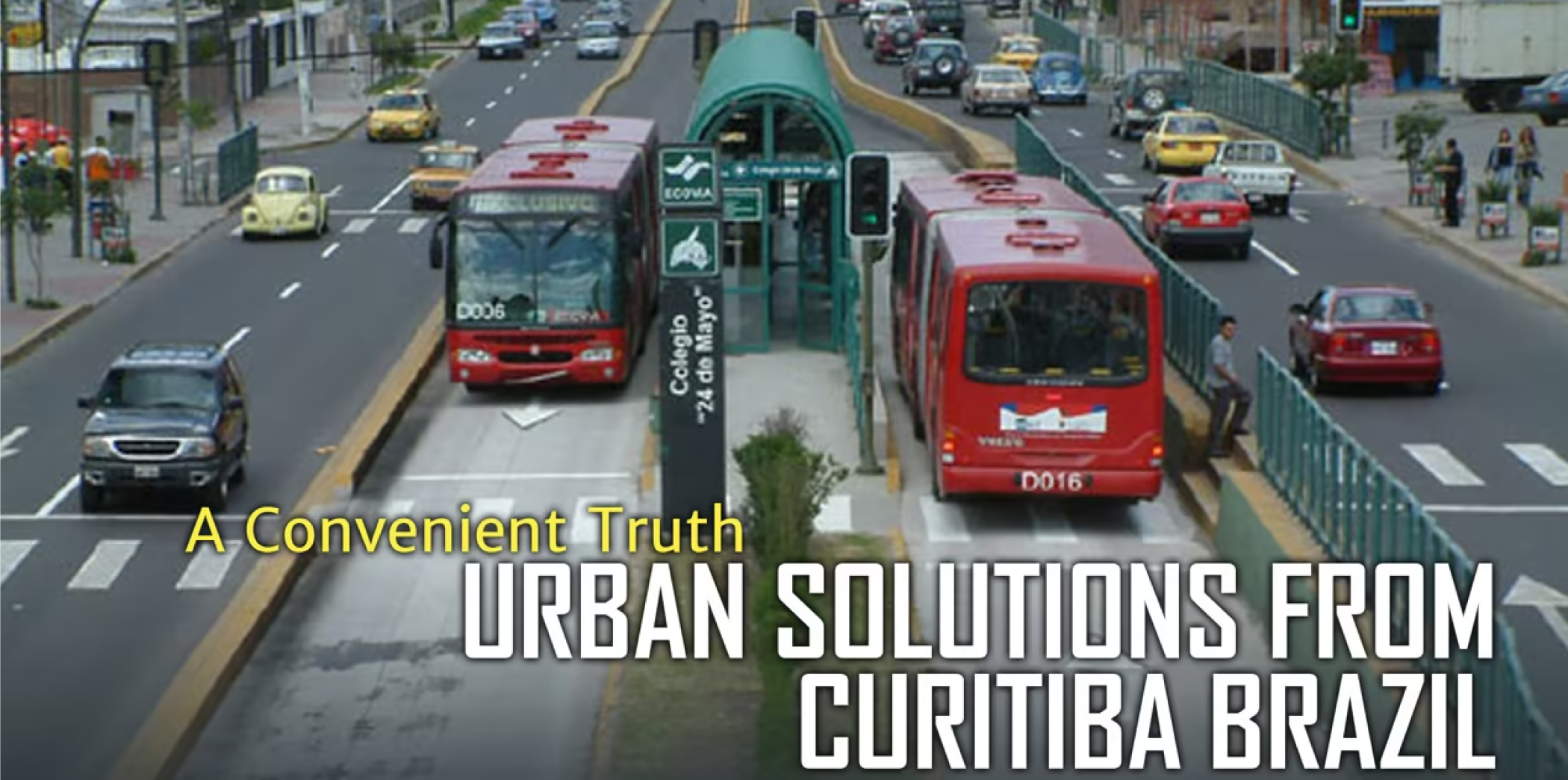
Agoraphobic Nation: Sprawl and Culture
Documentary by g16sley. Everything in culture is a product of the planned environment, and yet, nobody is paying attention to the way the American landscape is being molded by corporate interests. The sociological effects of the abandonment of urban planning have been devastating, causing mental illness and violence throughout much of the population.
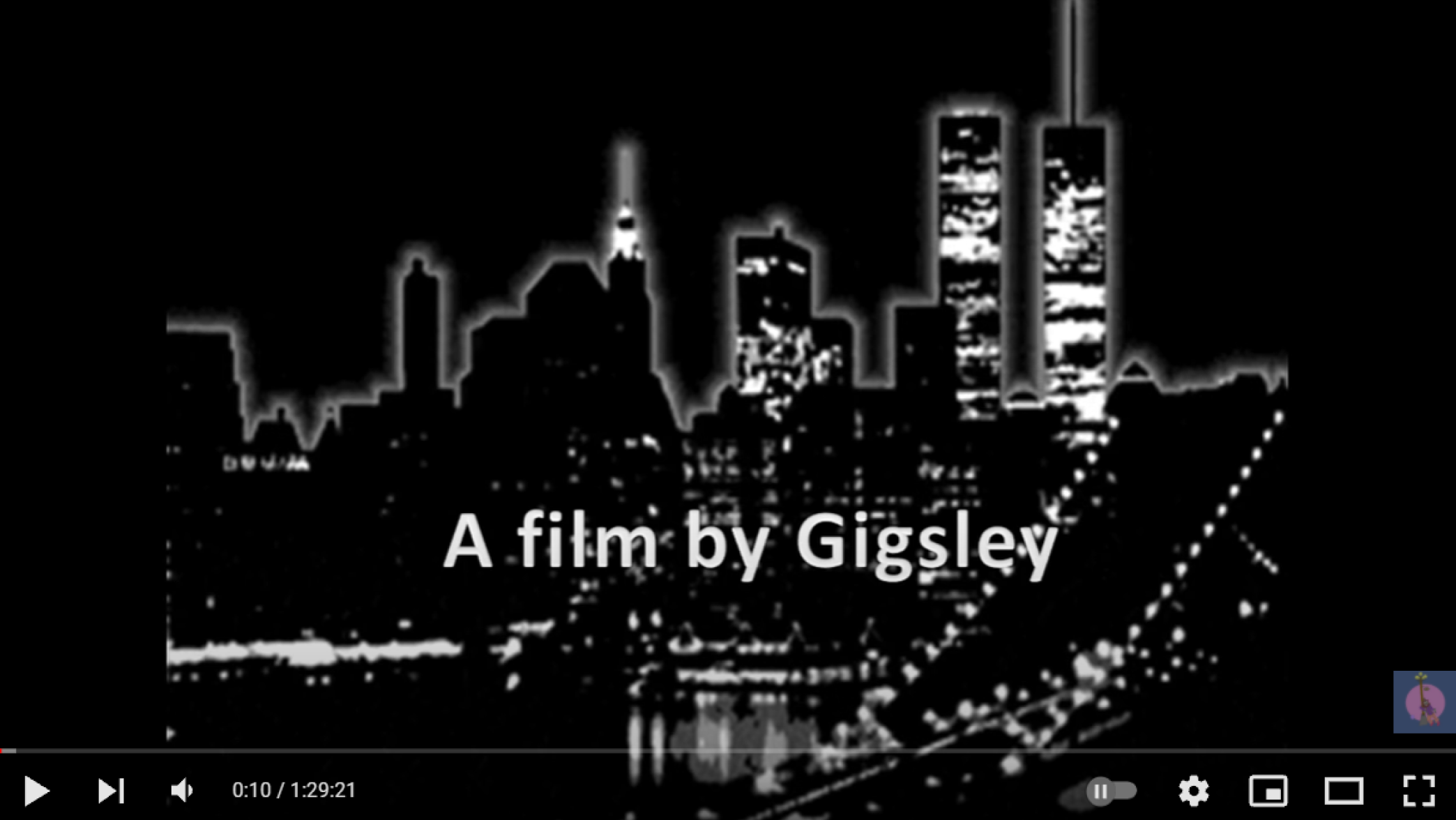
The Infinite Happiness
Conceived as a personal video diary, The Infinite Happiness is an architectural experience. The film takes us to the heart of one of the contemporary housing development considered to be a new model of success.
Inhabiting the giant “8 House” built by Danish architect Bjarke Ingels in the suburbs of Copenhagen, Ila Bêka & Louise Lemoine recount their subjective experience of living inside this experiment of vertical village, elected in 2011 « World best residential building ».
As a Lego game, the film builds up a collection of life stories all interconnected by their personal relation to the building. The film draws the lines of a human map which allows the viewer to discover the building through an inner and intimate point of view and questions the architecture’s ability to create collective happiness showing the surprising results of this new type of social model of the 21rst century.

The Human Scale
50% of the world’s population lives in urban areas. By 2050 this will increase to 80%. Life in a mega city is both enchanting and problematic. Today we face peak oil, climate change, loneliness and severe health issues due to our way of life. But why? The Danish architect and professor Jan Gehl has studied human behavior in cities through 40 years. He has documented how modern cities repel human interaction, and argues that we can build cities in a way, which takes human needs for inclusion and intimacy into account. Film website.
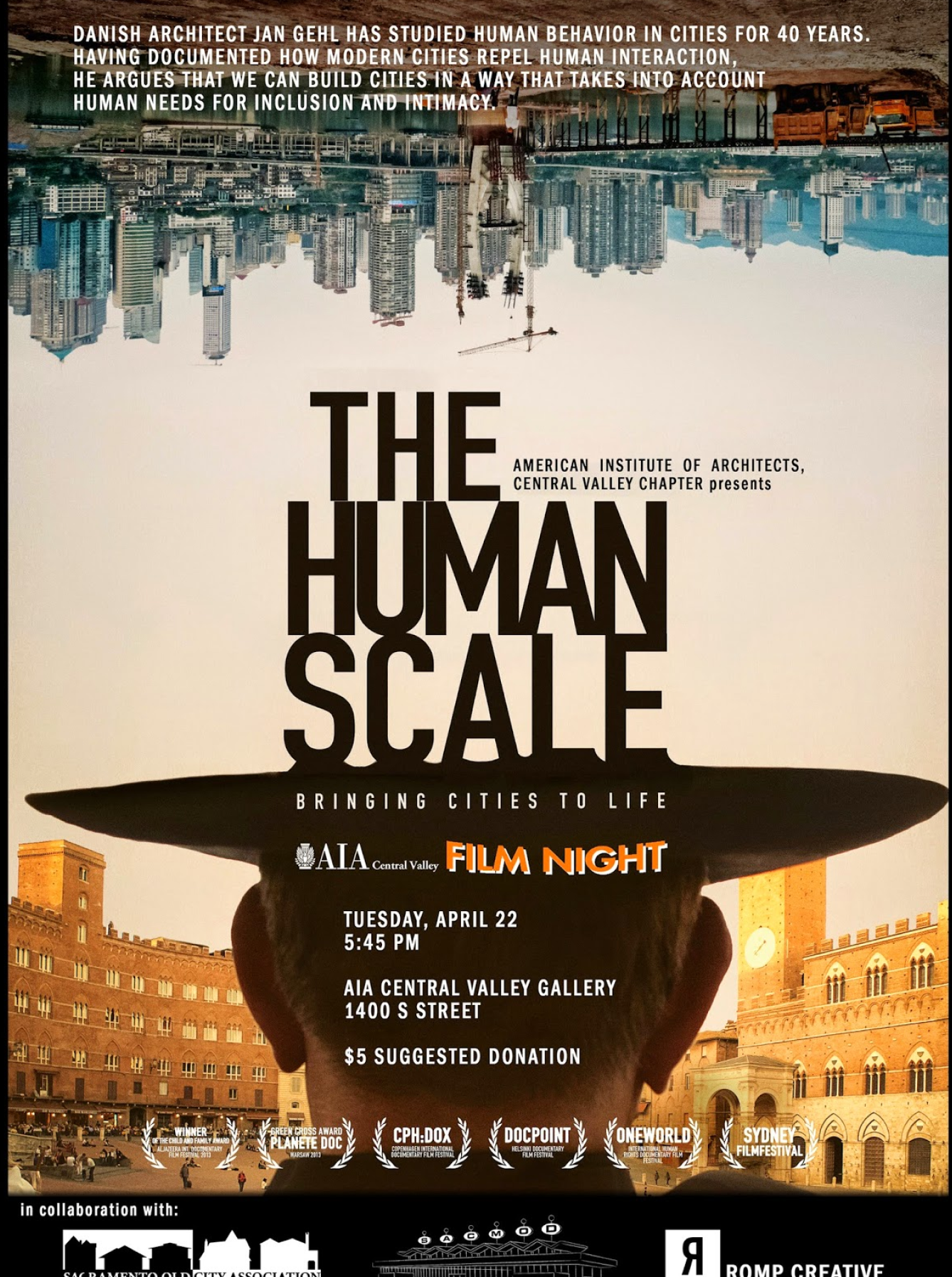
Urbanized
Urbanized is a feature-length documentary about the design of cities, which looks at the issues and strategies behind urban design and features some of the world’s foremost architects, planners, policymakers, builders, and thinkers.
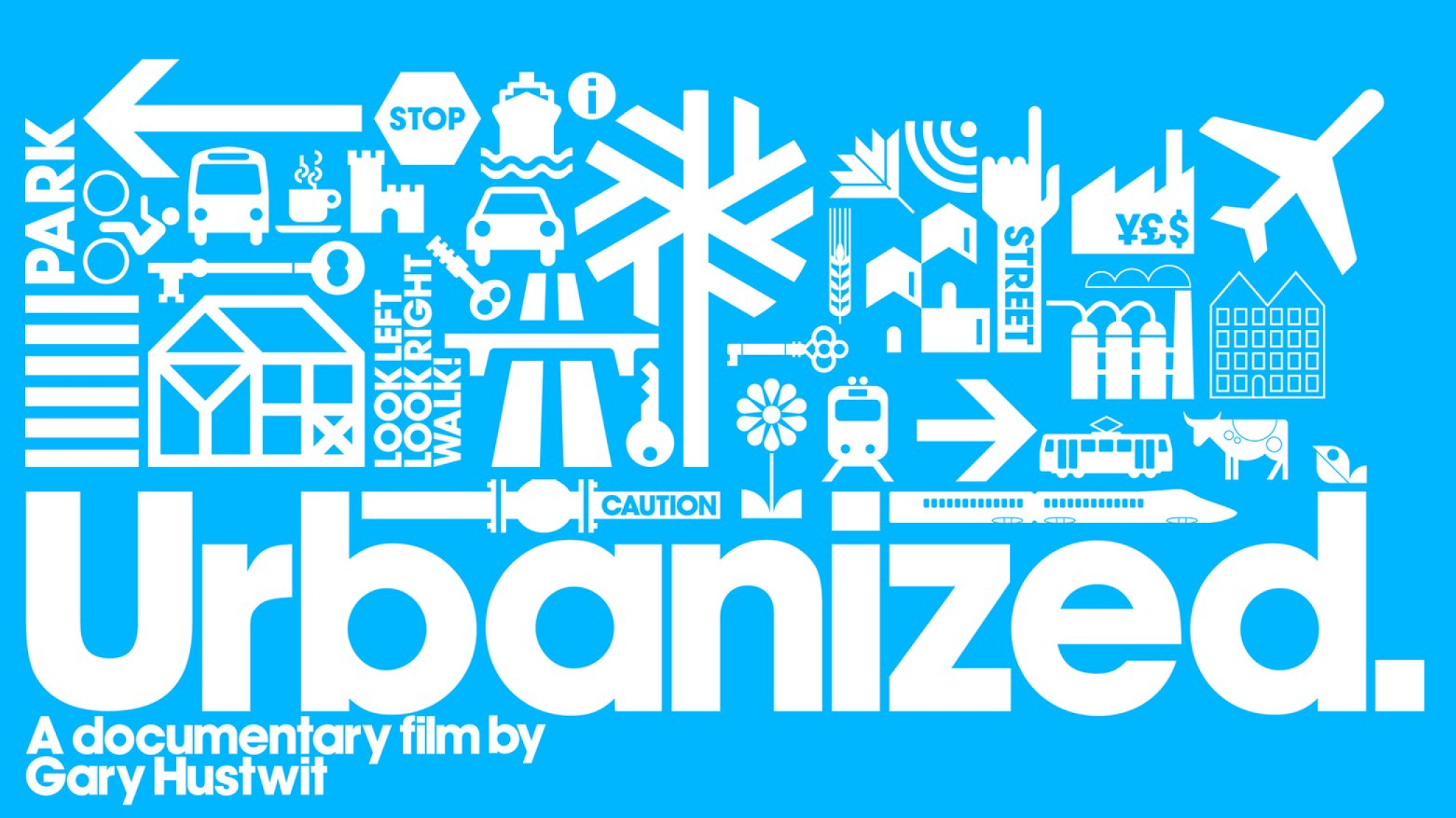
My Brooklyn
My Brooklyn follows director Kelly Anderson’s journey, as a Brooklyn gentrifier, to understand the forces reshaping her neighborhood. The film documents the redevelopment of Fulton Mall, a bustling African-American and Caribbean commercial district that – despite its status as the third most profitable shopping area in New York City – is maligned for its inability to appeal to the affluent residents who have come to live around it. As a hundred small businesses are replaced by high rise luxury housing and chain retail, Anderson uncovers the web of global corporations, politicians and secretive public-private partnerships that drive seemingly natural neighborhood change. The film’s ultimate question is increasingly relevant on a global scale: who has a right to live in cities and determine their future?
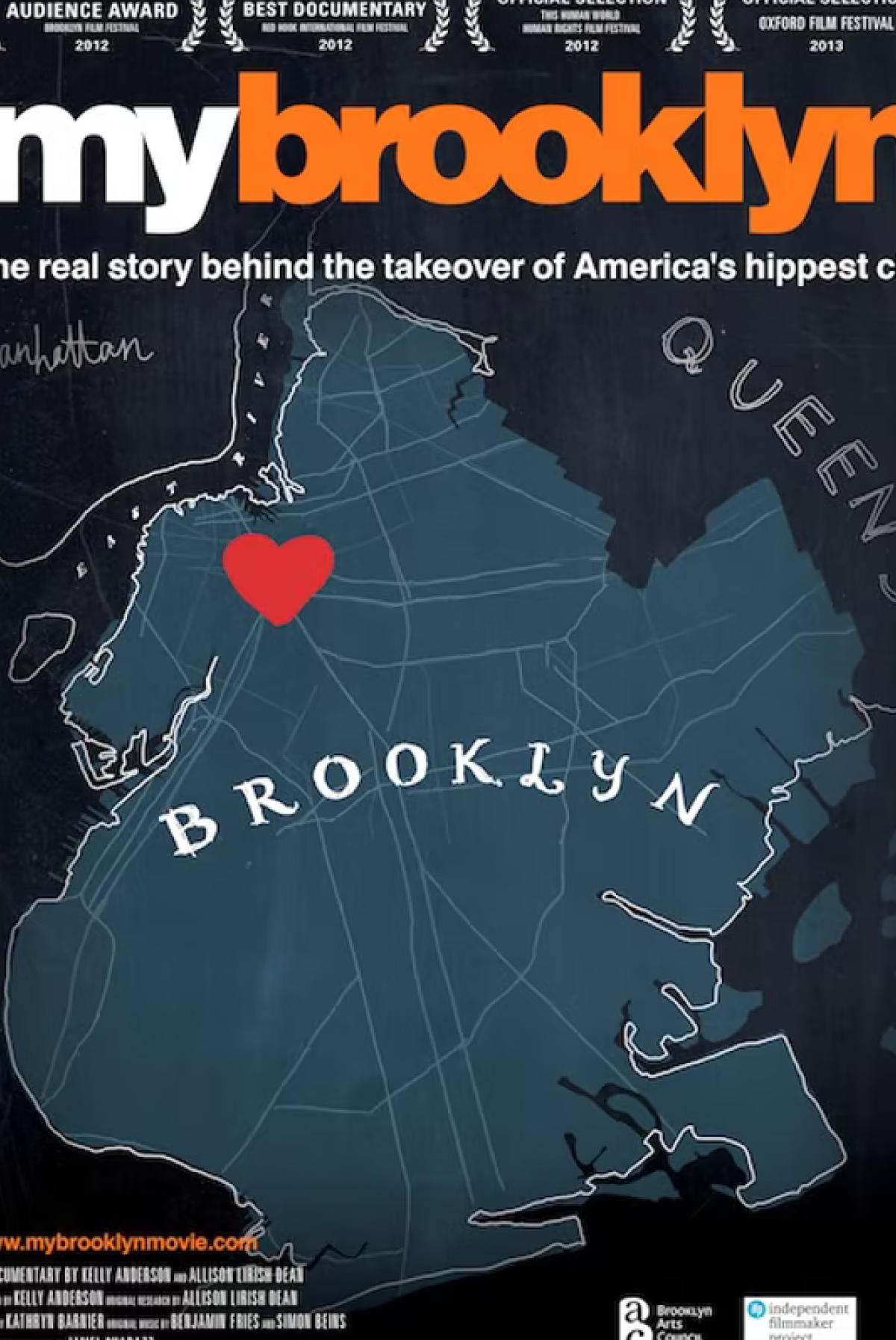
Citizen Jane: Battle for the City
Writer and urban activist Jane Jacobs fights to save historic New York City during the ruthless redevelopment era of urban planner Robert Moses in the 1960s. Watch documentary trailer here.
